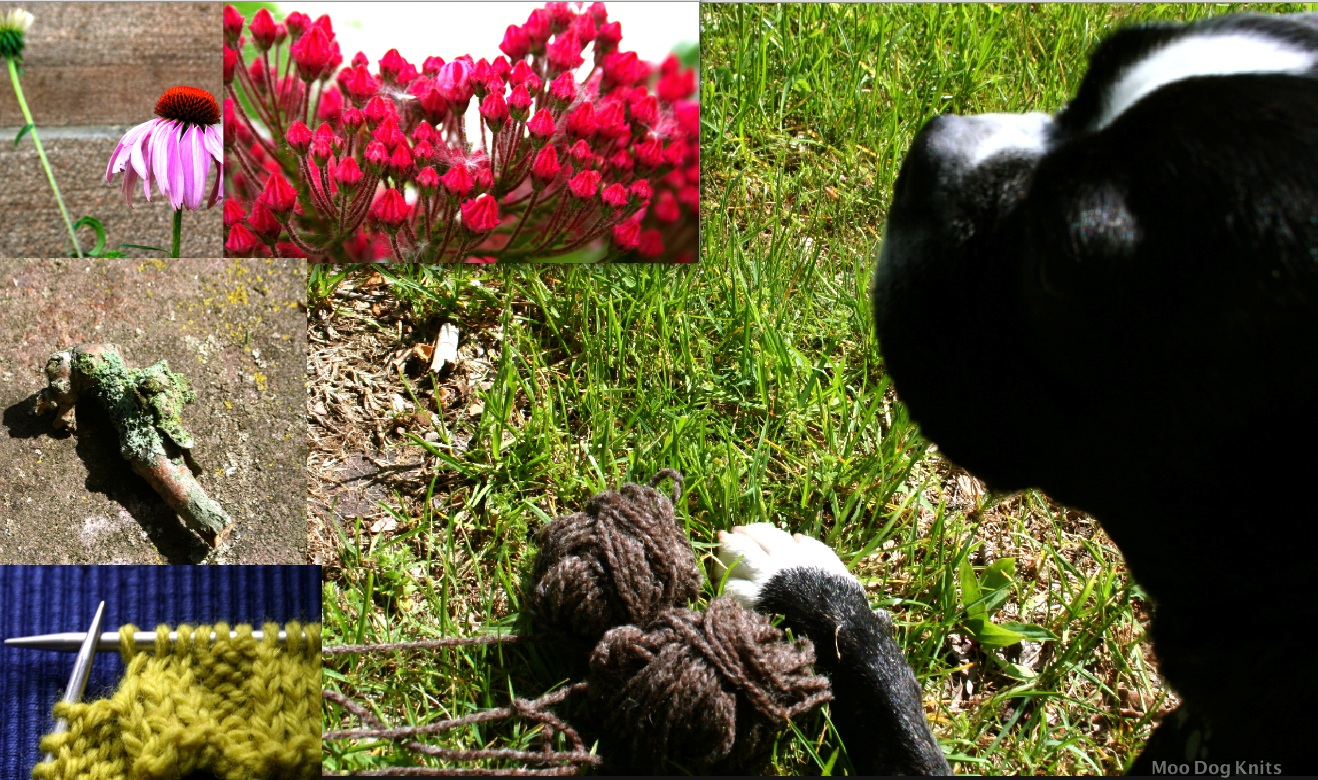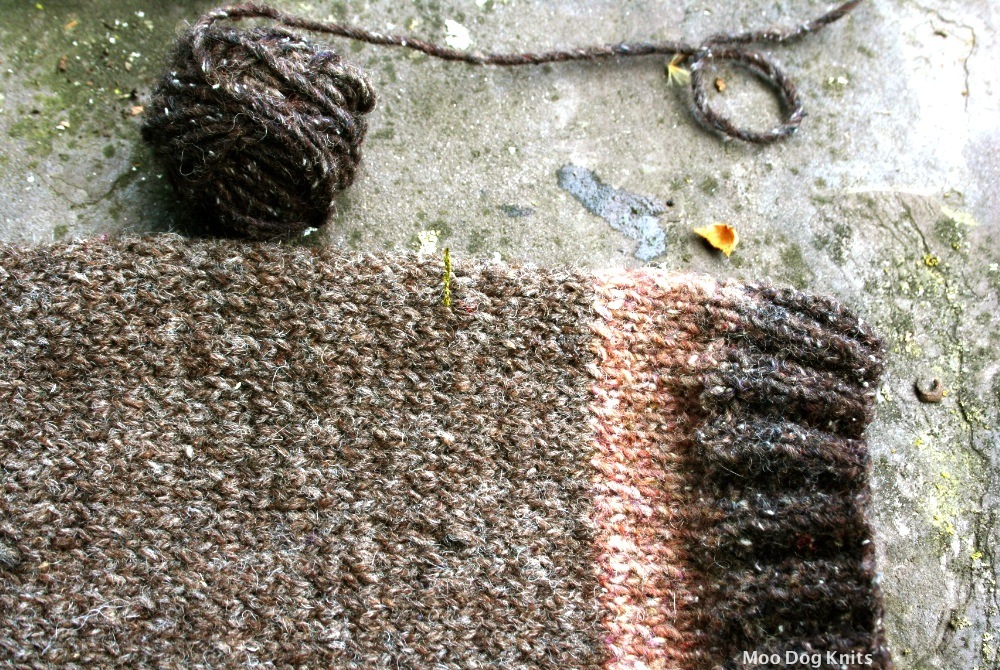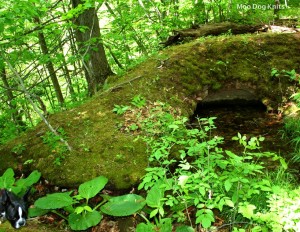“Lichens can make purple.”
Ah, but to try out that concept means gathering enough lichen for a natural dye session. A goal, a purpose then, to only collect those odd bits of lichen found on fallen branches that would be otherwise chopped to pieces by a mower. These odd life forms grow slowly on rock or tree trunks and with respect, will not ever harvest those but leave them be.So. As there is potential color all around us, what untapped possibilities are growing right in front of our eyes? Not only for chromatic hue ingredients, but also as medicinal, energy sources, health support prospects? Go ahead, look around on a walk or ride.
Dogs “see” the world in ways humans cannot even imagine. Daily walks with two Boston terriers uncover familiar terrain – one corner of a park is what seemed to be a lumpy earth mound. Seen from another viewpoint by walking closer – it reveals itself to be a mossy brick arch that protects a natural spring. Doing some research, the land that is now a park was once a farm donated to the city with the promise it will be used for citizens and to honor veterans.First in a series about color from life, knitting, a garden for natural dyes.

Boston terrier with mountain laurel, lichen, coneflowers for natural dyes and knitting inspiration.


